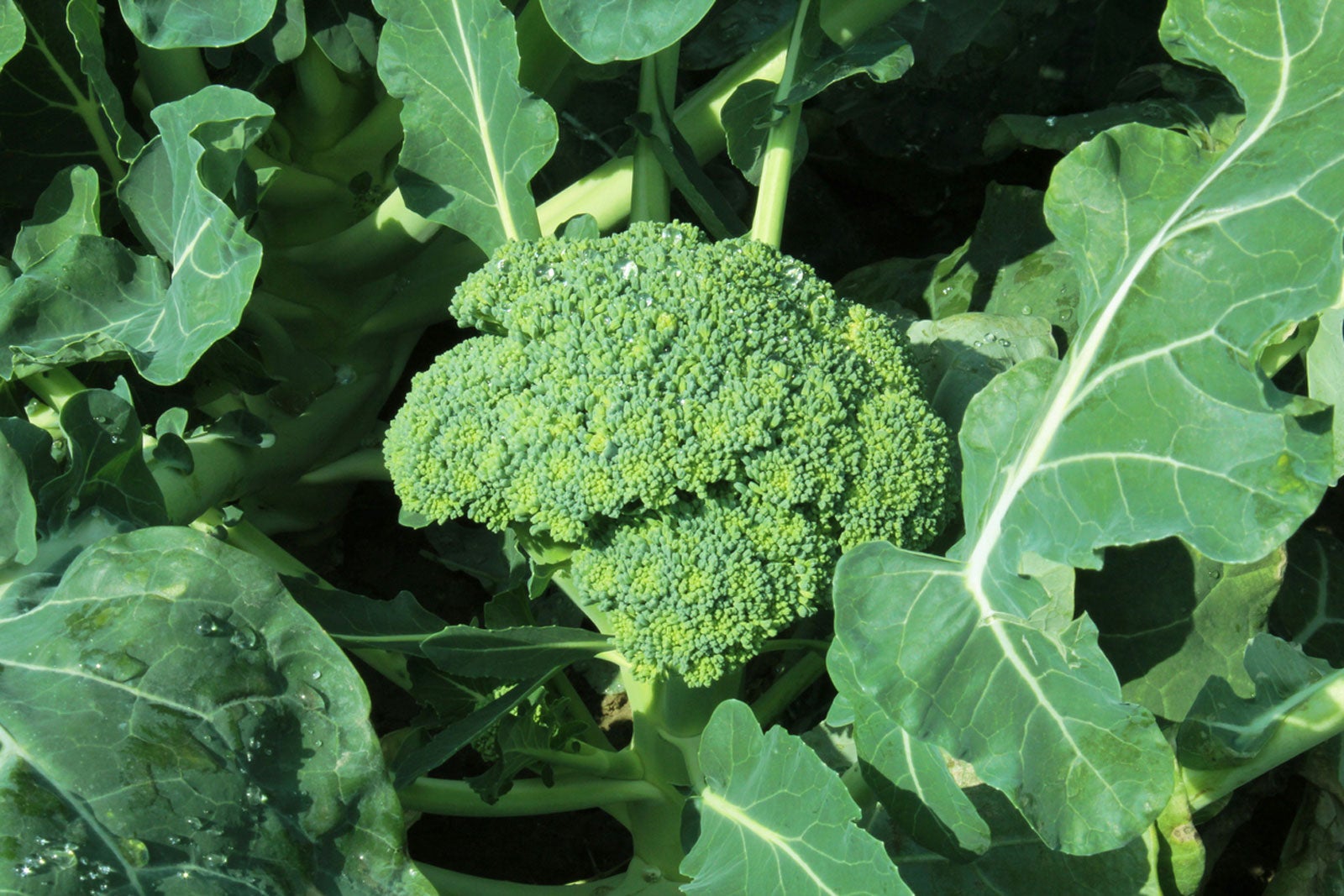Growing Green Goliath Broccoli: How To Plant Green Goliath Broccoli Seeds


Are you thinking of growing broccoli for the first time but confused about when to plant? If your weather is unpredictable and you sometimes have frost and hot temperatures in the same week, you might’ve just thrown up your hands. Just wait though, Green Goliath broccoli plants may be just what you’re looking for. Tolerant of both heat and cold extremes, Green Goliath readily produces a crop in conditions where other broccoli plants might fail.
What is Green Goliath Broccoli?
Green Goliath is hybrid broccoli, with seeds bred to withstand extreme temperatures of both heat and cold. It reportedly grows heads of the vegetable clusters as large as one foot (31 cm.) across. After removing the central head, numerous productive side shoots continue to develop and supply the harvest. Harvest for this plant lasts about three weeks instead of the typical all at once.
Most broccoli varieties bolt as the summer heats up, while Green Goliath continues to produce. Most types withstand and prefer a touch of frost, but the Green Goliath keeps growing as temperatures drop even lower. If you wish to grow a winter crop, with temperatures in the high 30's, then row covers and mulch can keep the roots warm by a few degrees.
Broccoli is a cool season crop, preferring a light frost for the sweetest taste. When planting in a warm four-season climate, Green Goliath info says this crop grows in USDA zones 3 to 10.
Certainly, the higher end of this range has little freezing weather and frost is rare, so if planting here, do so when your broccoli grows primarily during the days of coldest temperatures.
Harvest time when growing Green Goliath broccoli is about 55 to 58 days.
Growing Green Goliath Broccoli Seeds
When growing Green Goliath broccoli seeds, plant as a spring or fall crop. Plant seeds in late winter or late summer, just before temperatures begin to change. Start seeds indoors about six weeks before this occurs or sow them directly into the prepared bed. Give this crop a full sun (all day) location with no shade.
Gardening tips, videos, info and more delivered right to your inbox!
Sign up for the Gardening Know How newsletter today and receive a free copy of our e-book "How to Grow Delicious Tomatoes".
Locate plants one foot apart (31 cm.) in rows to allow plenty of room for growth. Make rows 2 feet apart (61 cm.). Don’t plant in an area where cabbage grew last year.
Broccoli is a moderately heavy feeder. Enrich the soil before planting with compost or manure worked in well. Fertilize the plants about three weeks after they go in the ground.
Take advantage of Green Goliath’s capabilities and extend your harvest. Grow a couple plants later than normal to see how it performs in your garden. Be prepared for a large harvest and freeze part of the crop. Enjoy your broccoli.

Becca Badgett was a regular contributor to Gardening Know How for ten years. Co-author of the book How to Grow an EMERGENCY Garden, Becca specializes in succulent and cactus gardening.
-
 Looking For Plants To Give You The Soft And Fuzzies? Try These 5 Fuzzy Leaf Plant Options
Looking For Plants To Give You The Soft And Fuzzies? Try These 5 Fuzzy Leaf Plant OptionsLovers of texture, drama, silver foliage and tactile plants will adore these special sensory garden additions. These fuzzy leaf plant options will leave you all aglow
By Susan Albert
-
 Get Ready For A Summer Of Hummers! Grow These Full Sun Hummingbird Plants and Flowers
Get Ready For A Summer Of Hummers! Grow These Full Sun Hummingbird Plants and FlowersIf you’re lucky enough to enjoy a sunny backyard, make sure you are maxing out on your pollinator opportunities and grow these full sun hummingbird plants and flowers
By Tonya Barnett